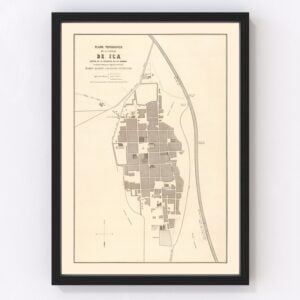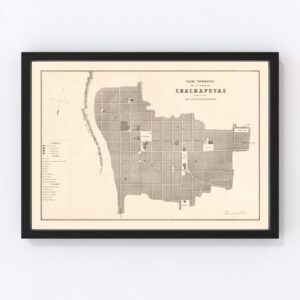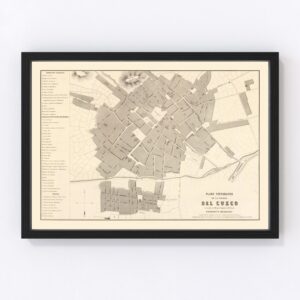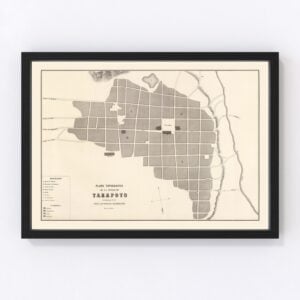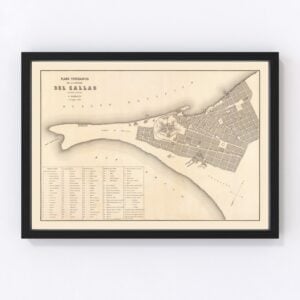Old Maps of Peru
Take a look through our collection of Old Maps of Peru.
Peru is a country located within western South America. It is bordered by Ecuador, Colombia, Brazil, Bolivia, and Chile. With a total land area of 1.28 million square kilometers, or 0.5 million square miles, Peru holds the title of the 19th largest country in the world, and is the third largest country by area within South America. The capital, and largest, city within Peru is Lima. The total population of the country is 34 million inhabitants. The government system of Peru is a unitary presidential republic, and the current president is Pedro Castillo, having served in his position since 2021.
Geographically, the Andes mountain range within Peru divides the country up into three different regions. The first is the costa, or coast, which is located to the west of the country and is a narrow and arid plain. The second region is the sierra, or highlands, which is the region of the highlands. This region includes the highest peak within Peru, which is the Huascaran, standing at an altitude of 22,205 feet or 6,768 meters. The final region is the selva, or jungle, which is flat terrain covered by the Amazon Rainforest.Peru is one of seventeen megadiverse countries in the world, which is due to its varied landscape and climate. The country is home to over 21,000 species of plants and animals, including over 1,800 species of birds, over 500 species of mammals, and over 300 species of reptiles. Many rare species such as the puma, jaguar, and spectacled bear live within Peru. The Pacific Ocean off of the coast is home to several sea creatures like sea bass, flounder, tuna, crustaceans, shellfish, as well as sharks, sperm whales, and whales. Plant life is also unique within Peru. The slopes of the country are home to moss, orchids, and bromeliads, while the Amazon Rainforest is known for its amount of trees and canopy plants.
Peru’s economy is classified as the 48th largest economy in the world, and is considered an “upper middle” economy by the World Bank. Over the past 25 years the country’s economy has seen high growth and development. The most popular exports from Peru are copper ore, gold, refined petroleum, lead ore, iron ore, zinc ore, refined copper, and animal meal and pellets. Mining is the largest economic sector within the country, as 60% of exports are mining products. In 2019, the country was the second largest world producer of copper, silver, and zinc.
Holding a population of 31.2 million, Peru is the fourth most populated country in South America. Over time, the demographic growth rate has declined, going from 2.6% in 1950 to 1.6% in 2000. The population is estimated to reach around 42 million in the year 2050. In 2017, 79.3% of the population lived in urban areas. Major cities within Peru include the metropolitan area of Lima, Arequipa, Trujillo, Chiclayo, Huancayo, and Iquitos. The life expectancy in Peru is 75 years, with 72.4 years for men and 77.7 years for women.






